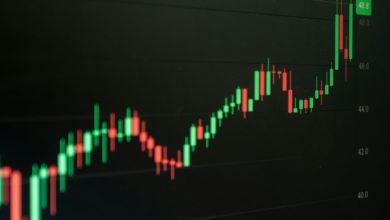Stock Market Today: Stocks Rally as Powell Signals Potential September Rate Cut

U.S. stocks surged on Friday after Federal Reserve Chair Jerome Powell’s highly anticipated speech at Jackson Hole suggested the central bank might cut interest rates in September. Investors, shaken by a week of losses led by tech stocks, interpreted Powell’s comments as a signal that monetary policy could become more accommodative, easing financial conditions for growth-focused sectors.
The Dow Jones Industrial Average climbed 2.15% to 44,909, hitting an intraday record, while the S&P 500 gained 1.53% and the Nasdaq Composite rose 1.69%, leading tech stocks higher. Broad-based gains reflected investor relief over the Fed’s dovish tone, with sentiment supported by optimism that easing rates could bolster corporate profits and consumer spending.
Market Movers:
- Nvidia (NVDA) +1.34%: Nvidia continued its post-volatility rebound as investors reacted to Powell’s speech. The AI chip leader has been under pressure in recent weeks due to concerns about the sustainability of the AI boom, but the potential for lower borrowing costs and a supportive Fed backdrop helped refuel confidence. Analysts note that Nvidia’s dominant position in the AI chip market positions it well for long-term growth despite short-term swings.
- Apple (AAPL) +1.75%: Apple rose alongside the broader tech sector, reflecting investor optimism that a more accommodative monetary policy could support consumer spending. Investors highlighted strong pre-orders for Apple’s upcoming product launches, and the company’s diverse revenue streams, including iPhone sales, services, and wearables, provide resilience against economic uncertainty.
- Microsoft (MSFT) +1.21%: Microsoft gained as investors anticipated a more favorable financing environment for growth stocks. Its cloud computing and AI businesses continue to attract solid demand, and analysts expect these segments to drive earnings growth even if consumer tech spending slows. Microsoft’s stock has also benefited from a rotation back into large-cap tech after recent pullbacks.
- Boeing (BA) +2.45%: Boeing surged as industrials rallied on Powell’s dovish tone. Investors are optimistic that lower rates could reduce financing costs for airlines, supporting aircraft orders. Additionally, Boeing’s ongoing production ramp-ups and anticipated delivery schedules have helped restore confidence after months of supply chain and regulatory challenges.
- Goldman Sachs (GS) +1.68%: Financial stocks like Goldman Sachs climbed as traders speculated that easing rates would increase borrowing activity, potentially boosting investment banking revenue. The firm is well-positioned to benefit from both advisory fees and lending activity if market conditions improve. Analysts also noted that GS’s diversified business model provides some insulation against market volatility.
Fed Policy Expectations Remain in Focus
Powell’s speech showed the Fed’s willingness to adapt policy to shifting economic conditions. While he did not commit to a specific rate cut, his acknowledgment that “the baseline outlook and the shifting balance of risks may warrant adjusting our policy stance” provided markets with room for optimism. Investors are now closely watching upcoming economic data, including inflation readings and consumer spending trends, to gauge whether the Fed will follow through with a September cut.
Tech Sector Recovery
Tech stocks, which had been under pressure from AI trade fears and high valuation concerns, led Friday’s rally. Companies with strong growth potential, like Nvidia, Microsoft, and Apple, benefited most, highlighting willingness to re-engage with high-beta names. Analysts caution that volatility may remain high, especially as investors parse AI adoption rates, supply chain developments, and broader macroeconomic conditions.
Looking Ahead
As the week wraps up, all eyes will stay on incoming economic indicators and any further Fed guidance. Market participants are weighing the likelihood of a September rate cut against persistent inflationary pressures, corporate earnings trajectories, and geopolitical risks. Investors are advised to maintain a balanced approach, watching for signs that the central bank’s policy adjustments will translate into sustained growth across sectors.




